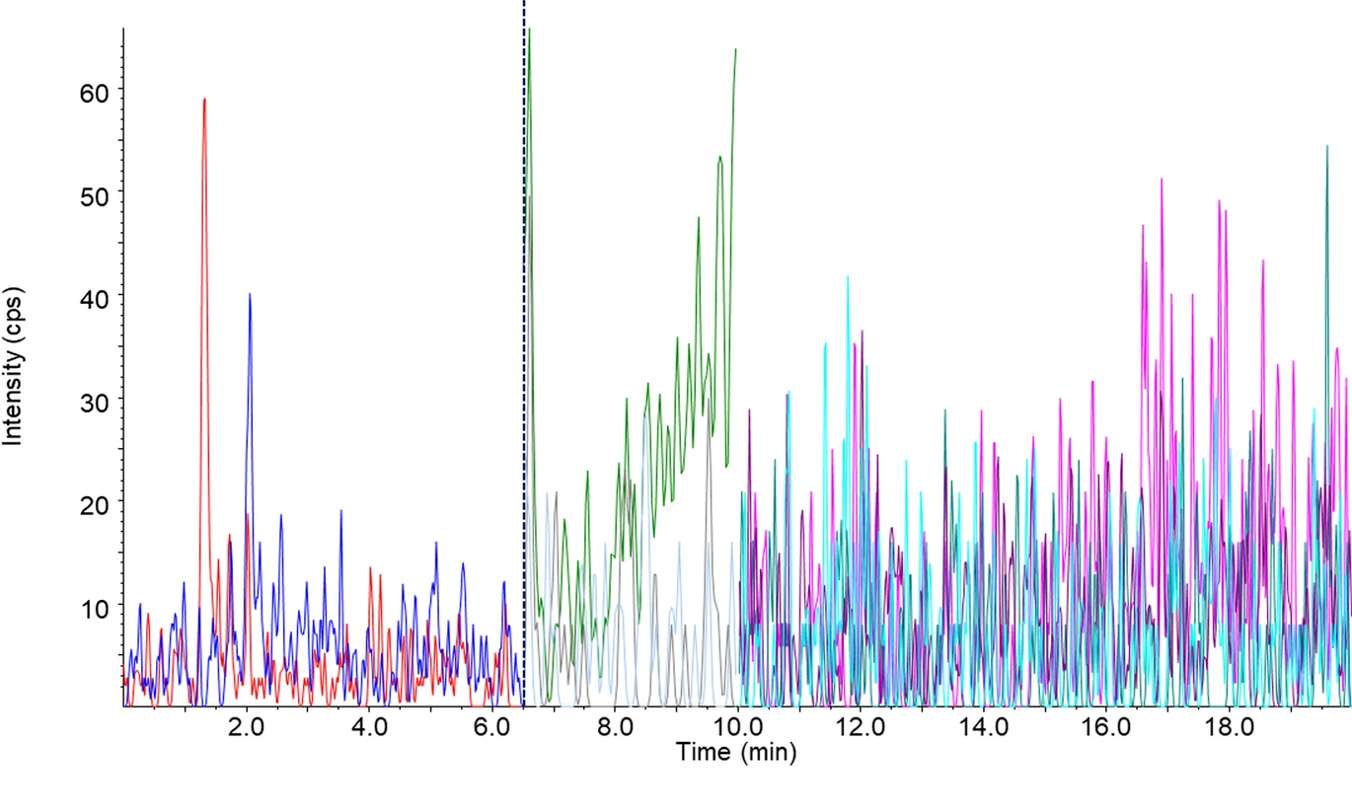HPLC-MS/MS-based Glucuronide Conjugate Detection Service
Creative Biolabs offers a wide range of preclinical laboratory services for the pharmaceutical, biotechnology, and chemical industries, including HPLC-MS/MS-based glucuronide conjugate service for metabolite analysis.
HPLC-MS/MS Glucuronide Conjugate Detection: A Powerful Analytical Technique
High-performance liquid chromatography coupled with tandem mass spectrometry (HPLC-MS/MS) is a powerful analytical technique widely used for the detection of glucuronide conjugates.
-
Can detect low-abundance metabolites and provide specific identification based on fragmentation patterns.
-
Allows for precise quantification of glucuronide conjugates.
-
Capable of detecting and quantifying compounds across a broad concentration range.
-
MS/MS provides detailed structural information, useful for identifying unknown metabolites.
-
Suitable for rapid analysis of multiple samples.
-
Applicable to various biological matrices, such as urine, blood, and tissues.
-
Often requires minimal sample preparation.
 Fig.1 Illustration of LC-MS/MS.1
Fig.1 Illustration of LC-MS/MS.1
HPLC-MS/MS-based Glucuronide Conjugate Detection Service at Creative Biolabs
Glucuronide conjugate detection is a multifaceted process that involves sample preparation, enzymatic hydrolysis, incubation, and complex analytical techniques such as LC-MS/MS. By following a systematic approach, scientists at Creative Biolabs can accurately identify and quantify glucuronide conjugates, providing critical information about the metabolism and excretion of various substances.
Sample Preparation
Collect biological samples. Samples are processed by methods such as protein precipitation, liquid-liquid extraction, or solid-phase extraction to remove proteins and other interfering substances.
Incubation
Liver fractions from different sources were incubated with the samples to be tested to see if the metabolites produced glucuronide conjugates.
Analysis
Liquid chromatography-mass spectrometry (LC-MS/MS) provides the separation and identification of glucuronide conjugates.
Detection and Quantification
Quantify the amount of glucuronide conjugate in the sample and confirm the identifiability of the glucuronide conjugate.
Detailed Information of Our Service
Here, we share some details of our HPLC-MS/MS-based glucuronide conjugate detection process so that you can learn more about our services!

Key Applications of HPLC-MS/MS-based Glucuronide Conjugate Detection
HPLC-MS/MS-based glucuronide conjugate assays provide precise and detailed information on drug metabolism, pharmacokinetics, safety, and interactions, making it a versatile and powerful tool that can be used in a variety of fields.

For more services about drug metabolism, pharmacokinetics, safety, and interactions, please click the following keywords to get!
Frequently Asked Question
A1: Why use the HPLC-MS/MS method for the detection of glucuronide conjugates?
Q1:
-
HPLC-MS/MS can detect very low concentrations of glucuronide conjugates.
-
Tandem mass spectrometry provides specific identification of glucuronide conjugates based on their unique fragmentation patterns, reducing the likelihood of false positives.
-
HPLC-MS/MS can quantify glucuronide conjugates over a wide range of concentrations, accommodating both high and low levels in samples.
-
HPLC-MS/MS detects small sample preparations, reducing the risk of sample loss or contamination and simplifying the analysis process.
Contact Us
You can easily get in touch with Creative Biolabs experts or get help from our customer service team.
Reference
-
Sim, Y.E. et al. "Rapid and simple LC–MS/MS determination of urinary ethyl glucuronide, naltrexone, 6β-naltrexol, chlordiazepoxide, and norchlordiazepoxide for monitoring alcohol abuse." J Anal Sci Technol. 13, 6 (2022).
For Research Use Only | Not For Clinical Use


 Fig.1 Illustration of LC-MS/MS.1
Fig.1 Illustration of LC-MS/MS.1


 Download our brochure
Download our brochure